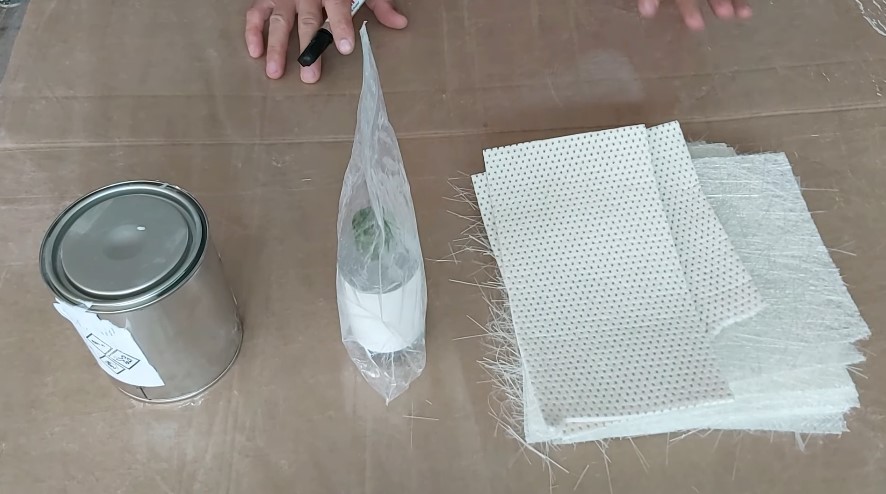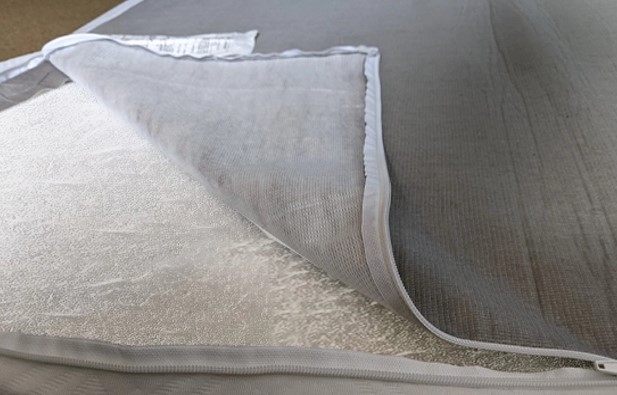Mattress toppers are widely used for adding extra comfort and support to existing mattresses. But do mattress toppers have fiberglass? As fiberglass is potentially hazardous to health and safety, it is understandable that many people are concerned about it.
Well, fiberglass is, indeed, present in mattresses, but not in all. Many mattress toppers feature a layer of fire-resistant fiberglass, typically set in place as a safeguard. However, others contain certain firewall materials to further strengthen the protection they provide.
Let’s take a closer look at what exactly is the case with fiberglass in mattress toppers and how concerned you should be.
What is Fiberglass?
Fiberglass is a type of synthetic material made from fine glass fibers that have been spun into yarn. It’s a flexible, lightweight, and versatile material with a variety of uses, including in construction, insulation, and manufacturing.
The material is commonly used to improve fire resistance and durability in household items such as mattresses, insulation, roofing, and wallpaper. Fiberglass properties make it strong, durable, and molded into various forms, whereas it’s also resistant to heat and chemicals.
Do Mattress Toppers Contain Fiberglass?
Most mattress toppers do not contain fiberglass. However, some do contain fiberglass as a fire-resistant layer. The fiberglass layer is typically located inside the core of the topper and is designed to improve the fire resistance of the mattress topper.
This layer is usually overlaid with protective materials, such as a combination of fire-resistant polyester and polyester batting, to further strengthen the protection the topper provides.
It’s important to check the mattress topper before purchasing, to ensure that it does not contain any fiberglass layers. After all, this hazardous material creates several health concerns that should not be taken lightly.
In Which Part of the Mattress Topper Does the Fiberglass Reside?
The fiberglass layer is actually located underneath the outer shell of the mattress topper, acting as a protective barrier in case of a fire. It can help prevent the spread of flames to the highly flammable materials inside the mattress, like a safety lining.
In most products, this layer is not in direct contact with your skin, so it’s unlikely you have to worry about any irritation, however, you can never be sure. It’s a necessary component to ensure that your mattress topper is fire-resistant and safe to use.
Are Mattress Toppers with Fiberglass Safe to Use?
Fiberglass is generally considered safe; however, in large quantities, it can be dangerous to your health. These tiny particles spread easily and can be inhaled. Excessive exposure to fiberglass can cause skin rashes, allergies, aggravated asthma symptoms, respiratory irritation, and even cancer.
Since fiberglass is not particularly visible, people may not realize that they have been exposed to it. For this reason, it’s important to check for any signs of fiberglass in your mattress topper and make sure to limit your exposure if it’s present.
Why Do the Manufacturers Use Fiberglass in Mattress Toppers?
So why do mattress topper manufacturers include fiberglass and other fire-resistant materials in their products even though it’s potentially hazardous?
The answer is simple – it’s required by many fire safety regulations and standards to include fire-resistant materials in mattress toppers.
Back in 2007, the CPSC created new safety rules to make sure mattresses could withstand exposure to an open flame for at least 30 minutes. This led to the introduction of fiberglass as a fire retardant in mattress manufacturing.
As a result, manufacturers use this material to meet the safety requirements for their products.
However, not all companies use fiberglass as a fire retardant. Some brands, like Saatva, opt for natural materials instead. However, because these natural options are more expensive to obtain, their mattresses may be a bit pricier.
How to Avoid Fiberglass Exposure from Mattress Toppers?
The best way to avoid fiberglass exposure is to ensure that your mattress cover remains intact. Never remove the cover, even if it has a zipper, and make sure to invest in a quality mattress protector to keep your bed clean and protected.
If your mattress or its cover contains fiberglass, the tag should warn you never to remove it. Remember, the removal of the cover is what causes the particles to become airborne, leading to potential health risks.
Also, if you’re in the market for a new mattress, make sure to do your research and read product reviews to ensure that the mattress contains no fiberglass.
How to Determine If a Mattress Topper Contains Fiberglass?
So, how can you tell if a mattress topper contains fiberglass? Here are a few key points to look out for:
Check the Tag
Isn’t this obvious? Almost all mattress toppers come with a tag containing information about the product. This tag will usually indicate whether or not the mattress topper contains any fire-resistant material, such as fiberglass. But beware of deceptive terms like ‘glass wool’ or ‘glass fiber.’
Check the Price
Fiberglass is often inexpensive, so it shouldn’t make mattresses more expensive. But, if you’re shopping for a lower-priced mattress (around $500 or less for a queen size), it’s more likely to have fiberglass and other potentially harmful materials.
Sometimes, cutting costs can also mean cutting quality, so be careful when choosing a cheaper option.
Inspect the Manufacture Location
If you see a label that says “made in China” on a mattress, chances are high that it contains fiberglass. That’s because manufacturing standards in other countries may differ.
It’s important to note that not all Chinese-made mattresses have fiberglass, but generally, mattresses made outside the US are more likely to have it than those labeled “made in the USA.”
Ask the Manufacturer
If you’re still not sure, you can always just ask the manufacturer directly or visit their website for further details. This will give you a more accurate answer about whether or not the mattress topper contains fiberglass.
Test Yourself
If you already own a mattress topper and are unsure whether it contains fiberglass, you can conduct a simple test. Take a white cloth and rub it over the surface of the topper. If any fibers come off and stick to the cloth, it’s possible that the topper contains fiberglass.
However, keep in mind that not all mattress toppers will shed fibers, even if they do contain fiberglass. If you are unsure, it’s best to err on the side of caution and assume that the topper contains fiberglass until you can confirm otherwise.
Frequently Asked Questions
If you have further queries regarding fiberglass in mattress toppers, the below answers to some of the most commonly asked questions might help.
Do Memory Foam Mattress Toppers Have Fiberglass?
Yes, some memory foam mattress toppers may contain fiberglass. However, you should check with the manufacturer or the product tag to make sure. In particular, cheap memory foam mattress toppers are more likely to have fiberglass as a fire-resistant material.
Can Fiberglass In Mattress Toppers Cause Allergies?
Yes, too much exposure to fiberglass can lead to allergies and other similar health issues, like aggravated asthma. The best way to avoid these risks is to ensure your mattress topper is fire-resistant without the use of fiberglass.
Can Fiberglass From Mattress Toppers Harm Your Eyes?
Yes, it can be since tiny fiberglass particles spread easily. When exposed to fiberglass, your eyes may become irritated and start to itch and water. If you think you’ve been exposed, make sure to flush your eyes with plenty of water to reduce irritation.
Can You Remove Fiberglass From Mattress Toppers?
Removing fiberglass from a mattress topper is tricky and potentially dangerous. If you need to get rid of it, try using a lint roller, but make sure to vacuum the area thoroughly afterward with a HEPA vacuum to avoid inhaling any fibers. Be careful and take your time for the best results.
What Are The Best Alternative Fire Retardants To Fiberglass In Mattress Toppers?
Some alternatives to fiberglass in mattress toppers are naturally-derived fire retardants such as wool, coconut fabric, and silica. These materials are usually more expensive than fiberglass, so you might find that products containing them tend to have a higher price tag.
Conclusion
Mattress toppers with fiberglass are generally considered safe if used correctly and with minimal exposure. However, that’s a bit tricky, and too much exposure to fiberglass can lead to all kinds of health troubles.
Be sure to read product reviews, ask the manufacturer, and check for any signs of fiberglass before purchasing. It’s also a good idea to invest in a mattress cover with a zipper to keep your bed safe and clean and limit your exposure if your mattress topper contains fiberglass.
Yet, your best bet is to look for natural fire retardants that are better for both your health and your wallet. After all, it is better to be safe than sorry.



